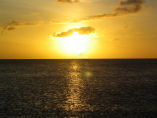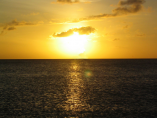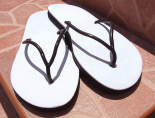Aruba
Caribbean SeaLevel of surfing
Beginner
Quality of surf
Average
Call code
297
Net code
aw
Area
193
Coastline
68 km
Climate
Tropical Marine
Hazards
Cyclones, Severe Storms
Best Months
November - January
Population
103484
Currency
Arubian florin (AWG)
Time Zone
Atlantic Standard time (AST) QUEBEC (UTC-4)
Special Requirements
introduction

EugeneZelenko: Location map for the Aruba; 21 December 2004
Aruba is a 33-kilometre (21 mi)-long Caribbean island, the westernmost of the ABC islands. Aruba lies just 18 miles off the coast of Venezuela. The island is 20 miles at its longest and 6 miles at its widest. The southern, leeward side of the island has long stretches of white sand beaches (for which this flat, riverless island is renowned), while the northern coast has a more rugged and dramatic landscape.
Aruba is an autonomous dependency of the Kingdom of the Netherlands, the island has the same status as the Netherlands Antilles.
The tropical climate of the island is moderated by constant trade winds from the Atlantic Ocean. The temperature is almost constant at about 27 degrees Celsius (81 degrees Fahrenheit).
history

Magnus Manske: Aruba sunset; 3 May 2006
The Arawak Indians were the first people to inhabit Aruba, migrating from South America and settling into Aruba close to 2000 years ago. Artifacts from the earliest settlers can still be seen at different places on the island, from the pottery and earthenware at Oranjestad's Archeological Museum, to cave drawings at Arikok National Park.
Aruba was discovered in 1499 by the Spaniard Alonso de Ojeda. Throughout the swashbuckling colonial era that followed, the island had its share of visits by pirates and buccaneers. In 1636 near the culmination of the 80 Year War between Spain and Holland, the Dutch took possession. There was an interregnum from 1805 to 1816 during the Napoleonic Wars and the English assumed control. In 1816 the Dutch returned.
In 1824 the greatest treasure of all was discovered - gold! Now Aruba had its first industry and the mines yielded until it became uneconomic and was discontinued in 1916.
But is was black gold that brought real prosperity. 1924 was probably the most important year in the island's history.
Two oil refineries were built; the Eagle Oil Refinery on the west side of the island, and the Lago Oil & Transport Company on the east side of the island.
The next industry to bring further prosperity was tourism. Cruise ships were the main source of visitors until 1959 when the first luxury hotel was opened. Over the years 28 additional hotels were the backbone of the island's economy.
During the 1950's, the Eagle Oil Company was dismantled and ceased to exist. On March 31, 1985 Exxon closed the refinery due to reduced world-wide demand for oil and oversupply of refining capacity. Aruba is seeking new approaches for the development and diversification of its economy.
After 1986, the government has emphasized on the tourism industry and has tripled the amount of hotel rooms.
In the last years, Aruba's tourism has shown a constant increase.
On April 20, 1991, the Coastal Oil Company reopened the refinery. Coupled with the booming tourism industry, it provides Aruba with one of the highest standards of living in the Caribbean.
A variety of attractive fiscal incentives are offered to encourage the establishment of new industrial enterprises, tourism projects and off-shore companies.
surfing

Magnus Manske: Aruba Sunset; 2006
Like many of the nations in the Lesser Antilles, Aruba is largely dependent on hurricane action to create significant swell though the countries location well to the south of the Caribbean ensure the best possible chance of picking up any available windswell from the north. Aruba is only 20 miles off the South American country of Venezuela and actually clear of the hurricane belt, not a bad location really as the country does not see the destructive path of hurricanes but capitalises on the swell as they pass far to the north. Aruba has a beautiful point to the North East of the island known as California Sand Dunes which acts as a real swell magnet for anything with a northerly or easterly vector. The south east offers some novelty reefs in the larger hurricane swells. The west side is resort city and some of the best swimming beaches in the Carribean.
what to pack

Flashdance: A pair of very simple Moroccan flip flops called "Cabjuks"; 25 May 2007
A small backpack makes a good carryon bag and will be useful in daily life. Women: remember to take a good flat pair of shoes.... And for everybody: pair of comfortable walking shoes will be great for walking. Beach clothing & sandals will be useful if you are going in the warm season. Try to choose classics, and items that you can mix and match. Have at least one set of nicer clothing for more formal occasions. Cotton is the best.
Definitely take along some bug repellent spray, good sunscreen and sunglasses! Better take your medicines with you (esp. anti histamine tablets), as the brands can be unfamiliar and cost more.
And take a good protection for your camera from the sand.






